4. Types
Let's start by looking at the different types of trombones.
When we talk about a trombone, we're usually referring to the slide trombone, which we've already described in detail. In addition to this type, there are also valve trombones, marching trombones, and superbones. These are instruments that are partly related to the trombone but are more associated with trumpet instruments.
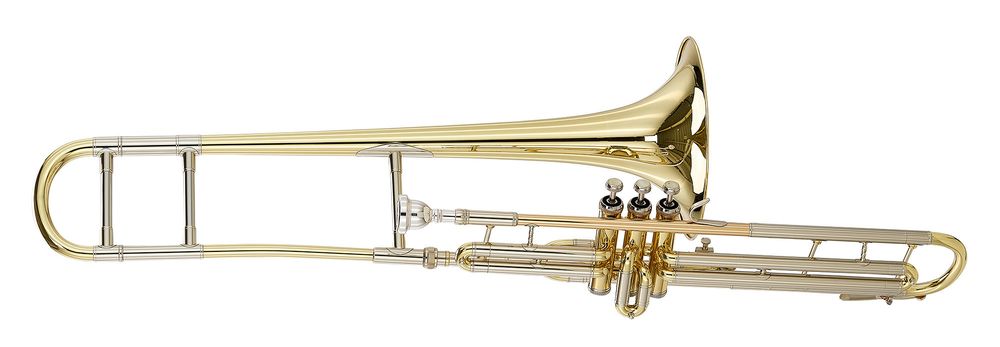
Valve Trombone
The valve trombone is very similar in construction to the slide trombone, but instead of a slide, it has valve mechanisms. This instrument was often used in jazz during the 1930s and 1940s.
The marching trombone is actually a large trumpet that plays in the trombone range and is mainly used in marching bands.
The superbone is a hybrid instrument; it's either a trombone trumpet or a trombone. However, it's a very exotic instrument found only in jazz.
Pitch and Range - From Treble to Contrabass
Throughout its long history, the trombone has often been used to double choir parts. Trombones have been made in all pitches for this purpose.
Today, trombones are still sometimes used in the bass, alto, tenor, and contrabass ranges. The alto trombone is tuned in "E-flat" (less commonly in "F"), the tenor and bass trombones are in "B," and the contrabass trombone is in "Contrabass F" (or "Contrabass B"). Depending on the tuning, the instruments are sometimes notated in transposing and sometimes in non-transposing keys.
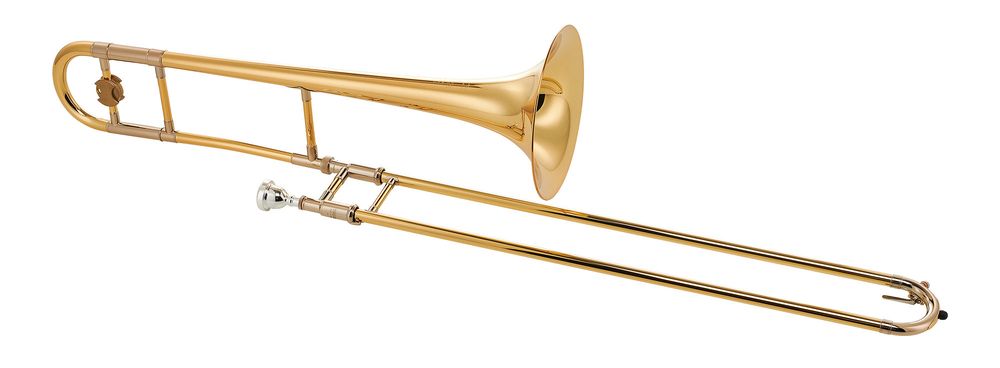
Tenor Trombone
However, the most common trombones are the tenor and bass trombones. The tenor trombone, tuned in B, is usually notated in "C" in bass clef and can be played chromatically from low E upward.

Bass Trombone
The bass trombone is essentially just a large tenor trombone. The only differences are in the bore, bell, and additional valves compared to the tenor trombone.
Valve - Losing Air?
In the 19th century, the trombone was first equipped with a rotary valve, the "quart" valve. Pressing this valve adds an additional valve loop that extends the instrument and thus lowers the pitch. In the case of the quart valve, used in tenor and bass trombones, it lowers the pitch by a fourth (from "B" to "F").
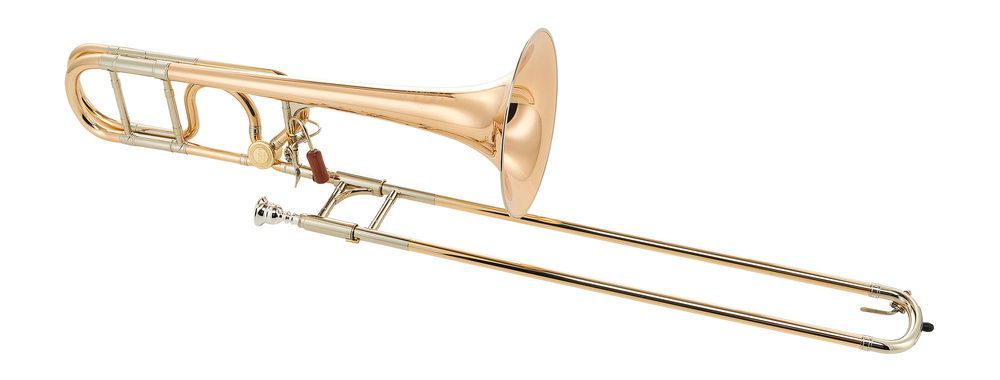
Trombone with Quart Valve
Trombones with such a quart valve have an extended range downward, starting from low E-flat (Eb). In addition to extending the range, the valve can also be used as an aid, especially in the lower registers. For example, the 6th slide position (the small "C") can be comfortably pulled in position 1 with the valve pressed.
Today, bass trombones often have another valve in addition to the quart valve, usually in a large second or small third interval. When both valves are pressed together, the fundamental pitch is lowered by a (diminished) fifth, hence the misleading term "quint valve." With this additional valve, chromatic playing is possible from the lowest pedal tone. This valve is either integrated into the valve loop of the quart valve and can only be used together with it (offset design), or it is located in front of or behind the quart valve and can therefore also be used alone (inline design).
In recent years, a lot of work has been done on the airflow of the valves. Often, the valve loop is wound very wide, even beyond the actual body of the instrument (open-wrap). In addition to this option, there are also different valve designs. In addition to the regular rotary valve, which is also used, for example, in the tuba, there are other valves such as Thayer or Hagmann.
German and American Construction Styles
Another distinction arises when discussing German and American construction styles. The German trombone is characterized by a narrow bore but a relatively large bell. It's typically made with thin walls, often complemented by a nickel silver rim around the bell. Other differences include the conical slide, extended water key, and frequent embellishments. In terms of sound, the instrument differs mainly in overtones and radiation characteristics, qualities often sought after by composers and conductors in classical literature.
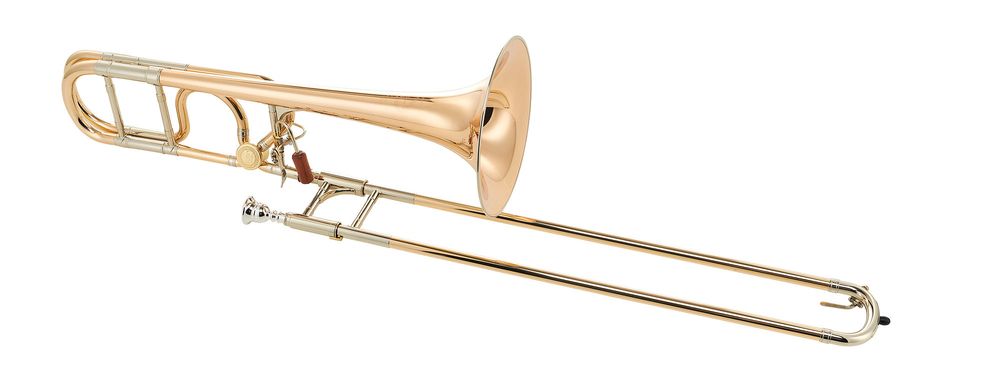
German Style
However, the American-style trombone has become established both in Germany and internationally, and is the preferred choice for trombonists except for specific applications of the German concert trombone. With its large bore and slightly thicker walls, it offers a centered, full, and dark sound.
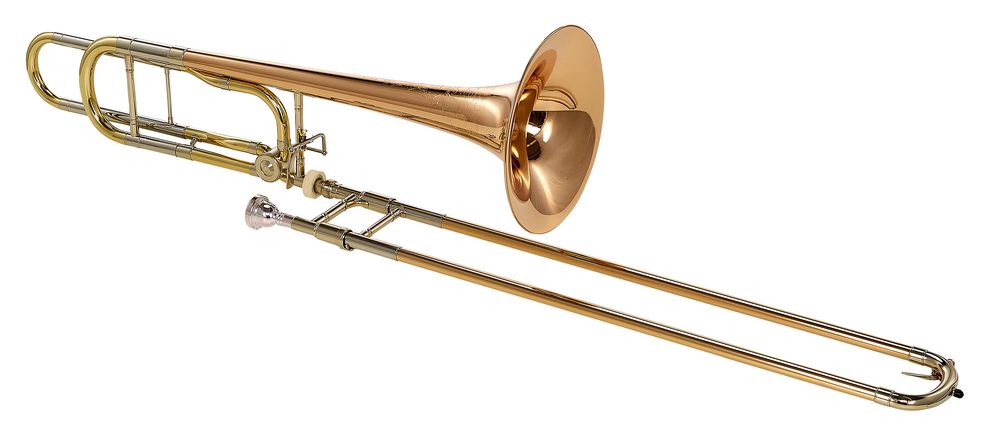
American Style
When choosing between the American and German styles, consider the intended use. Since the use of a German trombone is rarely necessary, the American style is usually the best choice.








